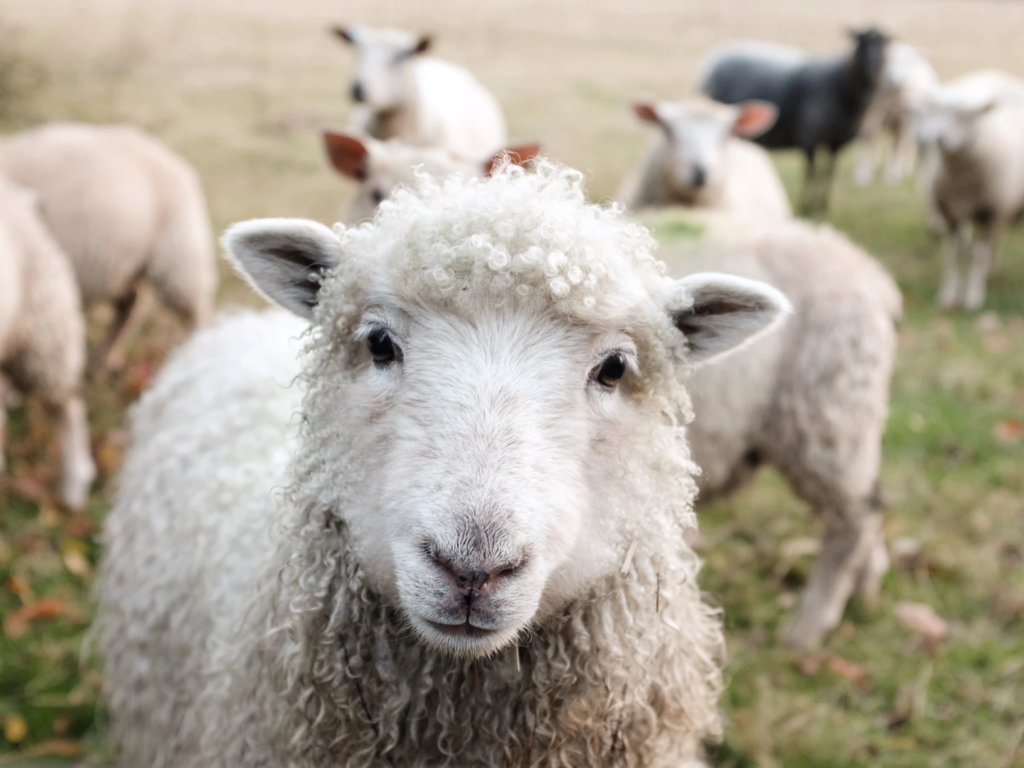 About six years ago, my best friend Sierra bought me a long, dark-gray hooded overcoat that was primarily made of wool. I adored it, not paying much attention to the material. As a vegetarian, I simply found it warm and aesthetically appealing. It took me a couple more years to begin morally grappling with the hypocrisy that was wearing animal hair while rejecting eating animals themselves. Even for some time after I realized that I was conflicted, I still wore the coat. It was sentimental and again, super warm. Ultimately, I concluded that it was best for the environment to wear the coat until it wore out.
About six years ago, my best friend Sierra bought me a long, dark-gray hooded overcoat that was primarily made of wool. I adored it, not paying much attention to the material. As a vegetarian, I simply found it warm and aesthetically appealing. It took me a couple more years to begin morally grappling with the hypocrisy that was wearing animal hair while rejecting eating animals themselves. Even for some time after I realized that I was conflicted, I still wore the coat. It was sentimental and again, super warm. Ultimately, I concluded that it was best for the environment to wear the coat until it wore out.
Then about six months ago, I decided to reread Lars Svendsen’s book Fashion: A Philosophy, where he argues that fashion influences how an individual perceives both themselves and others. I was just like, “Oh, right. Duh.”
I could no longer wear the coat. I couldn’t be a vegan wearing wool. It didn’t make me feel good about myself. And I felt that it weakened the strength of my activism. By wearing animal products as clothing, I felt I was implicitly endorsing the framework of domination that says material desires of humans are more important than nonhuman animal lives. And the environment.
One could say I fell down a rabbit hole of sorts after this. I urgently sought to understand the implications of using animals as “material goods.” As wool and leather tend to be the most ubiquitous, I narrowed my research to these industries. When I first started doing research I ran into numerous dead ends. I learned that just as slaughterhouses and “factory farms” are often conveniently hidden from the public eye, so too are the many facets of wool and leather production.
Wool
Many folks are under the impression that wool is “just a haircut,” therefore absolving consumers of any ethical responsibility when purchasing wool products. But animals reared for wool are often raised in inhumane conditions. (I won’t go into that here.) Similarly, consumers don’t consider what happens to the animals once they are no longer producing enough hair to remain profitable. The animals are viewed and treated as commodities, and they become “useless” once they can no longer be sheared. I’m sure you can see where this is headed.
And this is an important thing to remember as the popularity of “humanely-raised” animal products increases. In a system that values animals only so long as they are producing enough [insert animal by-product here] to deem their existence profitable to the producers, it is not as though the animals get to live out the remainder of their natural lives peacefully.
Is merino wool different?
No. The only difference is that merino wool fibers are softer than traditional wool fibers. In both cases, commercial wool industries ship the “spent” animals to sale lots or other facilities where they are processed into meat or leather, or both.
Leather
I had always thought of leather as coming from cattle, but I have come to understand that myriad animals are raised for their skin. (The attorney I work for is particularly partial to crocodile boots. *sigh*) Crocodiles, snakes, and all kinds of hooved animals are farmed for their skin. Taking the skin from another living thing is unethical because it goes against our values of compassion and justice—two of the most fundamental values shared across cultures.
I assume a part of the appeal of leather is that it’s “natural,” right? This couldn’t be further from the truth. Since leather is by definition skin, if left in an organic state it would decompose. The tanning and preserving animal skin requires the use of toxic chemicals like formaldehyde and glutaraldehyde. Further, toxic waste from leather tanneries pollute groundwater, poisoning the surrounding environment and communities. Hazaribagh, Bangladesh is globally recognized for its tanning industry and is considered one of the top ten most polluted places on earth. The conditions under which employees work are also horrendous but that is a topic of discussion for another time.
Sustainability
It is vital to remember that all forms of animal agriculture contribute to greenhouse gas emissions and require extensive land and water use. As mentioned above, these facilities contribute to pollution via chemical and waste run off. It certainly seems natural fibers are less ecologically sustainable than their synthetic counterparts. Polyurethane (often used to make vegan leather) has about half the environmental impact that animal-derived leather does.
As for me and my wool coat, I found it a new home. I offered it to a colleague who graciously accepted. I acknowledge that the ability to give away a warm coat implies a certain level of economic privilege. However, I remain dedicated to buying second-hand, and was able to pick up a gently-used synthetic winter parka for $25 as a replacement. Making these adjustments doesn’t have to break the bank.
As I have briefly mentioned before, veganism is a bit different for everyone. I don’t want anyone to read this and in turn feel ashamed if they are still using some form of animal-derived material in their lives. Honor your own personal journey. But I do hope that this article fosters awareness of how the materials we wear can speak for us.
__
Photo: Sam Carter via Unsplash




